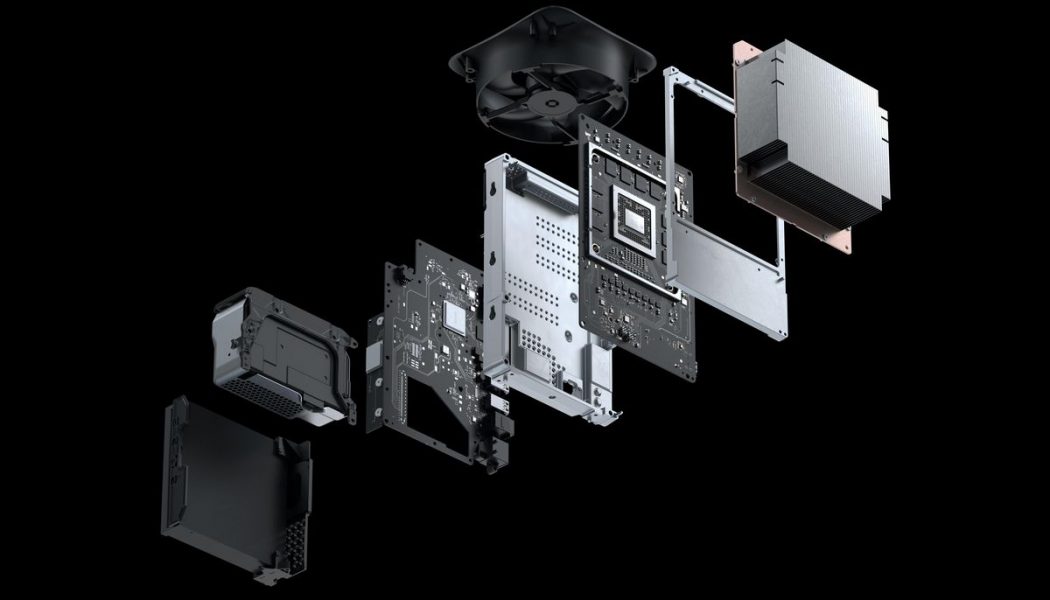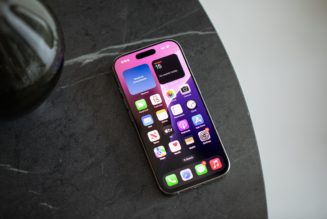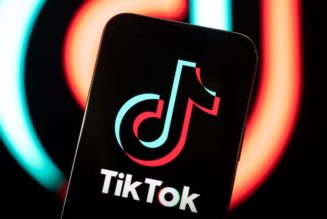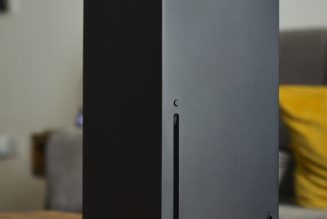The next-generation of Xbox gaming is a little more complicated than what we’re used to. This past week, Microsoft announced it’s releasing not one but two new consoles: the Xbox Series X and the Xbox Series S. Not only that, but Microsoft’s initial crop of first-party games will also be playable on its last generation Xbox, the Xbox One, as well as Windows PCs. And that’s before we get into Microsoft’s game streaming service, xCloud, which could mean you won’t need any Xbox hardware at all to play many of the latest games.
Each new generation tends to deliver big changes for console gaming, and Microsoft’s successors to the Xbox One are no different. Expect games to look better (thanks to more powerful graphics hardware and built-in support for more realistic lighting technology) and feel more responsive in some cases (thanks to support for frame rates of up to 120fps). Games should also load quicker because both consoles now include fast solid-state storage, a big improvement over the mechanical hard drive included in the Xbox One.
But Microsoft’s approach to this new generation is a big departure from how console launches have worked previously. Typically, we’ve seen Sony and Microsoft release just one new piece of hardware at launch, and each one tends to come with an exclusive library of games that you have to buy the new console in order to play. While Sony, too, has operated a game streaming service for years, it’s only typically used PlayStation Now to offer access to older titles, rather than brand-new releases like xCloud is promising.
Microsoft’s new consoles give you a lot more freedom with how you play its new games, but depending on where you choose to play them, you won’t get exactly the same experience. The Xbox Series X is a much more powerful machine than the Series S or the current Xbox One, for example, which will have a big impact on performance.
Microsoft’s two new consoles
Last week, Microsoft confirmed the rumors that it plans to release a second next-gen Xbox alongside the Xbox Series X. The Xbox Series S, it said, will launch on November 10th for $299 (£249, €299), $200 less than the $499 (£449, €499) Series X that will launch on the same day.
It’s not unusual for console manufacturers to offer a couple of different hardware options at launch, but normally, the differences are minor. The PS3, for example, was initially available in two models. There was a version with a 60GB hard drive as well as a cheaper version with a smaller 20GB hard drive, no Wi-Fi support, and fewer ports. Meanwhile, Microsoft also originally sold a “Core” version of the Xbox 360 in 2005, which included compromises like including a wired rather than wireless controller and omitting a hard drive.
The differences between the Xbox Series S and Series X are more substantial and are likely to have a big impact on how games look. While Microsoft says the Series X is targeting running games at 60fps at a full 4K resolution, the Series S will instead target a lower 1440p resolution at 60fps. It’s a big power disparity, similar to what we saw between the Xbox One and the Xbox One X, but this time, the two consoles are going to be available on day one, rather than releasing years apart.
:no_upscale()/cdn.vox-cdn.com/uploads/chorus_asset/file/21874754/xbox_series_x_component_blowout_1.jpg)
:no_upscale()/cdn.vox-cdn.com/uploads/chorus_asset/file/21868679/xbox_series_s_exploded.jpg)
Microsoft has a good rundown of the main differences between the Xbox Series X and the Series S on its website. Both have 8-core CPUs, although the X has a slightly higher maximum clock speed of 3.8GHz, rather than 3.6GHz on the Series S. Both support expandable storage of up to 1TB via an expansion card, both output over HDMI 2.1, and both are backwards compatible with “thousands” of Xbox One, Xbox 360, and original Xbox games. Both support hardware-accelerated ray tracing for more realistic lighting in games, both support Dolby’s high-end Atmos audio technology, and both will support the Dolby Vision HDR standard. They’re also both backwards compatible with all officially licensed Xbox One accessories like controllers and headsets — although there are no plans to support the Kinect camera.
There are, however, big differences between the two. The Series X has a 4K Ultra HD Blu-ray drive, but the Series S is digital-only, so you’ll have to download your games rather than buy them on disc. And yet, the disc-based X also has double the amount of internal storage with 1TB as opposed to 512GB, and more RAM at 16GB compared to 10GB. Physically, the Series S is also a lot smaller than the Series X; Microsoft calls the console its “smallest Xbox ever.”
:no_upscale()/cdn.vox-cdn.com/uploads/chorus_asset/file/21867253/twarren_200909_4177_0030.0.jpg)
Perhaps the most significant differences are in the graphics department. Although both consoles use AMD’s RDNA 2 graphics architecture, the Series X has 52 compute units. That’s not only more than double the 20 compute units you’ll find in the Series S, but they’re also clocked faster at 1.825GHz compared to 1.565GHz. In total, that means the Series X has 12.15 teraflops of graphical horsepower according to Microsoft, compared to 4 teraflops for the Series S.
That should make the Xbox Series X a shade more powerful than the PS5 in the graphics department, too. While Sony’s consoles are also based on AMD’s RDNA 2 architecture, both models of the PS5 clock in with 10.28 teraflops of GPU power. They’ve got a smaller number of compute units (36), but their maximum cap is higher at 2.23GHz. They’ve also got 8-core CPUs, but they’re clocked at 3.5GHz. However, it’s important to note that the PS5’s CPU and GPU clock speeds are variable based on the total workload, so it’s not quite an apples-to-apples comparison with the new Xbox consoles. This approach could benefit the PS5 in certain scenarios but limit it in others. Otherwise, the PS5’s specs on paper are similar to the Series X. It has 16GB of RAM, 825GB of storage, and a 4K Ultra HD Blu-ray drive.
Like Microsoft, Sony also has a step-down digital-only version of its next console, but here, the differences are a lot more basic. The lack of a disc drive means that the digital console is a little slimmer, but otherwise, PlayStation CEO Jim Ryan tells CNET that its two consoles are “identical products.” That means we shouldn’t see the same power disparity as Microsoft has.
Xbox Series X vs Series S vs PS5
| Categories | Xbox Series X | Xbox Series S | PS5 | PS5 (digital-only) |
|---|---|---|---|---|
| Categories | Xbox Series X | Xbox Series S | PS5 | PS5 (digital-only) |
| CPU | 8-core AMD Zen 2 CPU @ 3.8GHz (3.6GHz with SMT Enabled) | 8-core AMD Zen 2 CPU @ 3.6GHz (3.4GHz with SMT Enabled) | 8x Zen 2 Cores @ 3.5GHz with SMT (variable frequency) | 8x Zen 2 Cores @ 3.5GHz with SMT (variable frequency) |
| GPU | AMD RDNA 2 GPU 52 CUs @ 1.825GHz | AMD RDNA 2 GPU 20 CUs @ 1.565GHz | AMD RDNA 2 GPU 36 CUs @ 2.23GHz (variable frequency) | AMD RDNA 2 GPU 36 CUs @ 2.23GHz (variable frequency) |
| GPU Power | 12.15 TFLOPS | 4 TFLOPS | 10.28 TFLOPs | 10.28 TFLOPs |
| RAM | 16GB GDDR6 RAM | 10GB GDDR6 RAM | 16GB GDDR5 RAM | 16GB GDDR5 RAM |
| Performance Target | Target 4K @ 60 FPS. Up to 8K. Up to 120 FPS | Target 1440p @ 60 FPS. Up to 120 FPS | Target TBD. Up to 8K. Up to 120 FPS | Target TBD. Up to 8K. Up to 120 FPS |
| Storage | 1TB PCIe Gen 4 NVMe SSD (2.4GB/sec uncompressed, 4.8GB/sec compressed) | 512GB PCIe Gen 4 NVMe SSD (2.4GB/sec uncompressed, 4.8GB/sec compressed) | 825GB PCIe Gen 4 NVMe SSD (5.5GB/sec uncompressed, typical 8-9GB/sec compressed) | 825GB PCIe Gen 4 NVMe SSD (5.5GB/sec uncompressed, typical 8-9GB/sec compressed) |
| Expandable Storage | 1TB Expansion Card | 1TB Expansion Card | NVMe SSD Slot | NVMe SSD Slot |
| Backward Compatibility | “Thousands” of Xbox One, Xbox 360, original Xbox games. Xbox One accessories. | “Thousands” of Xbox One, Xbox 360, original Xbox games. Xbox One accessories. | “Overwhelming majority” of PS4 games | “Overwhelming majority” of PS4 games |
| Disc Drive | 4K UHD Blu-ray | None | 4K UHD Blu-ray | None |
| Display Out | HDMI 2.1 | HDMI 2.1 | HDMI 2.1 | HDMI 2.1 |
| MSRP | $499/£449/€499 | $299/£249/€299 | Unannounced | Unannounced |
It’ll be impossible to know the impact Microsoft’s hardware differences will have on gaming performance until we see them running games in the real world. But the main difference Microsoft is talking about right now is resolution. The Series S targets 1440p, while the Series X targets 4K, aka 2160p (although it will technically support resolutions of up to 8K). Despite the differences in resolution, Microsoft says both are targeting frame rates of 60 frames per second but can support up to 120fps.
If Microsoft’s claims are accurate, then games should feel just as smooth to play regardless of which console you’re gaming on, but they won’t be as detailed on the cheaper machine because of the lower target resolution. That might not matter as much if you’re playing on an older 1080p TV, but it’ll be more apparent if you’re using a modern 4K set.
It’s important to note that these kinds of claims about resolution and frame rate have historically been different from what we’ve ended up seeing games run at. Although Microsoft billed the Xbox One X as being capable of 4K gaming at 60fps, in reality, many of the most popular games around didn’t run at full 4K. Fortnite, for example, runs at a maximum of 1728p on the Xbox One X, while Doom: Eternal tops out at 1800p. It’s also common for games on both modern consoles to dynamically scale their resolution to keep their frame rates consistent. Digital Foundry found that Gears of War 5 would sometimes drop its resolution to as low as 1584p, for example, even though it was able to run at a maximum of 2160p. Resolution isn’t everything, and these games frequently looked amazing regardless of how many pixels were visible on-screen, but it’s worth bearing this variation in mind.
It’s also common for Xbox One X games to run at 30fps, especially when running at native 4K. Middle Earth: Shadow of War, for example, ran at a maximum of 2160p, but at 30fps. Rise of the Tomb Raider, meanwhile, could do 60fps on the Xbox One X while rendering at 1080p, but in its native 4K mode, it hovered closer to 30fps. The more powerful hardware in the Series X — and to a certain extent, the Series S — however, mean that trade-offs like this should theoretically be less necessary in the future.
Although your existing Xbox One controllers will work on the Xbox Series X and Series S, there’s also an updated controller for the new consoles, which is available in both white and black. Although it’s broadly similar to the design Microsoft has used for its previous controllers, it’s slightly smaller and has a dedicated share button to simplify the process of uploading screenshots and video clips. Its D-pad is also a circle like the recent Xbox Elite Series 2 controller, rather than a cross like it was on the Xbox One.
New games, new hardware
New hardware needs new games to make the most of it, and Microsoft and its partners have announced a host of games that are coming to its new console. The biggest of these is Halo: Infinite, the latest entry in the long-running sci-fi first-person shooter franchise that’s become synonymous with the Xbox brand since its debut way back in 2001.
Unfortunately, Microsoft recently delayed Halo: Infinite, meaning it will now release in 2021, rather than arriving alongside the new console. News of the delay, which Microsoft attributed in part to the pandemic, came after the game’s visuals were met with criticism after their initial unveiling, prompting developer 343 Industries to admit, “We do have work to do to address some of these areas and raise the level of fidelity and overall presentation for the final game.”
With other Xbox staples like Fable and Forza Motorsport without release dates, the delay has left third-party publishers to fill in the rest of the launch lineup, including Assassin’s Creed Valhalla, Marvel’s Avengers, Dirt 5, Watch Dogs Legion, and Tetris Effect: Connected.
:no_upscale()/cdn.vox-cdn.com/uploads/chorus_asset/file/21866102/Screen_Shot_2020_09_09_at_9.45.47_AM.png)
These games support different Xbox Series X and Series S features. Watch Dogs Legion will, for example, run in 4K and support ray tracing for more realistic-looking lighting, according to Microsoft’s site, but there’s no mention of ray-tracing support on the page for Assassin’s Creed Valhalla. Another interesting title in the launch lineup is Dirt 5, which can run at up to 120fps on the Xbox Series X. A high frame rate like this is especially important in a fast-paced racing game, and it should make Dirt 5 feel more responsive to play on compatible TVs.
One common feature a lot of these games share is that they’ll also be available for current-gen consoles like the Xbox One and PS4. What was more surprising was when Microsoft said that would be true for even its own flagship games. If Microsoft keeps that promise, it would be a big departure from how console manufacturers have treated these games in the past, where these exclusive games have previously been an essential part of the sales pitch for new hardware.
New games, old hardware
Microsoft has said you won’t have to buy new hardware to enjoy its upcoming first-party titles because many of them will also come to Xbox One. Here’s how Xbox chief Phil Spencer described the company’s approach back in July, where he said that every Xbox Game Studios game in the next couple of years will be playable on the Xbox One.
You won’t be forced into the next generation. We want every Xbox player to play all the new games from Xbox Game Studios. That’s why Xbox Game Studios titles we release in the next couple of years—like Halo Infinite—will be available and play great on Xbox Series X and Xbox One. We won’t force you to upgrade to Xbox Series X at launch to play Xbox exclusives.
And if you’re more of a PC gamer and don’t own an Xbox One, then Microsoft also typically releases its major titles there as well, and it says it plans to continue this policy this year.
:no_upscale()/cdn.vox-cdn.com/uploads/chorus_asset/file/20149796/Halo_Infinite_2020_Ascension_Demo_Campaign_07_4k.png)
There are some caveats you should be aware of. First is that these promises only cover Microsoft’s first-party titles, aka those published by Xbox Game Studios. Microsoft isn’t making any promises about how other publishers like EA, Ubisoft, or Activision will handle their new games.
Even then, Microsoft has been pretty explicit about the fact that this only covers its own games that will release across the “next couple of years,” and there are signs that some high-profile games that have already been announced might not be coming to the Xbox One. After Microsoft’s high-profile Xbox event in July, we noted that a majority of the title cards for Microsoft’s first-party games, including Forza Motorsport and Fable, didn’t mention that they’d be coming to the Xbox One.
Finally, in case this wasn’t obvious, you’re probably going to see a very different-looking game if you’re choosing to play on a base Xbox One from 2013 compared to a shiny new Xbox Series X.
There’s even been some concern that trying to continue to support the Xbox One could hold back Microsoft’s next-generation games, which could give Sony an advantage since it can focus all of its attention on the new hardware. Spencer has said this shouldn’t be a problem, but so-called “cross-gen” games on previous consoles have never made the most of the latest hardware.
New games, no hardware
Say you don’t own an Xbox or a gaming PC, but you do have an Android phone. Does Microsoft have any next-gen gaming options for you? Thanks to game streaming, it does. On September 15th, Microsoft is adding game streaming to Xbox Games Pass Ultimate, which costs $14.99 a month. The feature, which was known previously as xCloud, could give you a way to play many of the biggest Xbox Series X games without having to own any gaming hardware at all. You can stream them to a device as simple as an Android phone, for example (but not iOS, which we’ll get into in a second).
Game streaming isn’t an entirely new idea — Sony launched its PlayStation Now service way back in 2014 to a muted response — but Microsoft is taking a much more interesting approach. Rather than focusing on older titles, as Sony did with PlayStation Now, Microsoft says its new games will be available to stream the day they release and lists recent first-party titles like Forza Horizon 4, Gears of War 5, Tell Me Why, The Outer Worlds, and Ori and the Will of the Wisps as being among the 150-plus games available to stream at launch.
:no_upscale()/cdn.vox-cdn.com/uploads/chorus_asset/file/16334298/microsoft_xcloud_e3_2019_1.jpg)
The big compromise here is that even if the games themselves are running on powerful hardware (Microsoft has said that the service will initially be powered by Xbox One S consoles that will be upgraded to Series X hardware next year), getting all of that information to you over your internet connection is the challenging part. Depending on your internet speed and location, input lag is a definite possibility, as we found when we tried out xCloud during its beta.
There are also questions about which devices xCloud will be able to stream to in the future. At the moment, xCloud support has been announced for Android, but the restrictions Apple places on game streaming services mean that it won’t be available for iOS at launch, if ever. Unless Apple’s rules change beyond the limited concessions it made last week, it’s unlikely that iPhone or iPad owners will be able to use xCloud in its current form.
Since xCloud will be included with an Xbox Game Pass Ultimate subscription, it’s offered alongside a huge array of content beyond game streaming. Xbox Game Pass Ultimate’s $14.99 a month subscription also lets you download and play over 100 games directly on your Xbox or Windows 10 PC, as well as EA Play. It also includes an Xbox Live Gold subscription, which gives access to online multiplayer on Xbox.
PlayStation Now is still around, of course, but Sony isn’t promoting it as a way to play its recent games. It might have a huge catalog of over 800 titles, but it doesn’t feel like a serious attempt to compete with Microsoft’s game streaming, even after a recent price cut to $9.99 a month.
The backwards compatibility question
The ability to play a previous generation’s games on your new hardware (so-called “backwards compatibility”) has varied between different consoles and generations. Nintendo’s Wii U could happily play every Wii game, and the Wii could play every GameCube game before it. In contrast, the PS4 can’t natively play any games that were released for previous PlayStations — although some can be streamed via PlayStation Now.
With its new consoles, Microsoft has outlined three ways your old games will be playable on its new hardware. Some games will be backwards compatible, some will receive enhancements, and others will receive a free upgrade when newer versions are released.
With the Xbox Series X, Microsoft is making big promises about your ability to play your old Xbox games on its new hardware. It’s promising that “thousands” of games released for the original Xbox, Xbox 360, and Xbox One will be playable on its upcoming consoles, and it’s got a handy tool to let you browse them all. That includes almost every game released for the Xbox One, barring those that required its Kinect camera accessory.
The Xbox Series S will still be able to play older games, but Microsoft has confirmed that it won’t include their Xbox One X enhancements, like higher resolutions, where applicable. So in most cases, you’ll essentially be playing the version of the game that was designed for the less-powerful Xbox One S (although in some cases, games might benefit from more modern hardware such as a faster solid-state drive).
:no_upscale()/cdn.vox-cdn.com/uploads/chorus_asset/file/21865110/twarren_200908_4177_0026.0.jpg)
That’s the baseline, but in some cases, Microsoft says that games will be enhanced, running in higher resolutions and frame rates than they were originally released with and with support for new technologies like HDR. We’ve already seen Microsoft achieve some impressive results with these techniques on the Xbox One X, and it’ll be interesting to see if there are more improvements in store with the new hardware.
Finally, there’s Smart Delivery, which is essentially a free upgrade program that means you won’t have to re-buy an Xbox One game — like Assassin’s Creed: Valhalla, Cyberpunk 2077, or Doom Eternal — if it also gets released on the new hardware. Although this will theoretically offer the biggest upgrade, the feature is being selectively used. If you previously bought the original Control for Xbox One, for example, you won’t get a free upgrade to the next-gen version. That’s reserved for owners of Control’s new Ultimate Edition.
Sony hasn’t said as much about improvements for PS4 games running on the PS5. Back in March, it confirmed that the “overwhelming majority” of PS4 games will run on its new hardware, adding that it expects some of them to benefit from “more stable frame rates and potentially higher resolutions.” Some developers, like Bungie, have said they’ll offer free upgrades to the PS5 versions of their games.
Paying the price
If you want to continue to pay for your hardware and games up front, then that’s still going to be an option with Microsoft’s new Xboxes. As mentioned above, the Xbox Series X is going to retail for $499, while the Series S is going to cost $299. Major releases, meanwhile, are likely to be priced similarly or potentially at a $10 premium to current-gen titles. Sony is yet to announce pricing for its PS5.
But going into the next generation, Microsoft is making a big bet on people wanting to spend their money on games in monthly installments. For the Xbox Series X, that means paying $34.99 a month for 24 months via its Xbox All Access bundle (total cost: $839.76), while the Series S will be available for $24.99 a month (total cost: $599.76). All Access will be available in 12 countries this year: Australia, Canada, Denmark, Finland, France, New Zealand, Norway, Poland, South Korea, Sweden, the UK, and the US.
That’s more expensive than buying the console upfront, but included with Xbox All Access is Xbox Game Pass Ultimate — a subscription service that gets you free access to over 100 Xbox One titles, including big recent titles like Tell Me Why, Ori and the Will of the Wisps, and Forza Horizon 4 — free games via EA Play, Xbox Live Gold (a subscription that comes with its own monthly free games as well as access to online multiplayer), and game streaming via xCloud. Oh, and it gives free access to over 100 Windows 10 games as well, such as the recently released Microsoft Flight Simulator.
If you’d rather buy your hardware outright and buy a subscription to one of Microsoft’s game services separately, then Xbox Game Pass is available in a couple of different variations. Factor in the cost of these subscriptions to the total price of Xbox All Access, and the price of the console hardware itself drops to just $10 or $20 a month.
Xbox Game Pass comparison
| Categories | Xbox Game Pass Ultimate | Xbox Game Pass | Xbox Game Pass for PC |
|---|---|---|---|
| Categories | Xbox Game Pass Ultimate | Xbox Game Pass | Xbox Game Pass for PC |
| Platform | PC/Xbox | Xbox | PC |
| Games included | 100+ games | 100+ games | 100+ games |
| Xbox Live Gold | Yes | No | No |
| xCloud | Yes | No | No |
| EA Play | Yes | No | Yes |
| Monthly price | $14.99/£10.99/€12.99 | $9.99/£7.99/€9.99 | $9.99/£7.99/€9.99 (from September 17th) |
Suffice it to say, if you don’t have the cash to make a big upfront purchase, then Microsoft still wants to get you on board for its next generation of consoles. You won’t own any of the games you can play (aside from the older Xbox 360 games you can download with Xbox Live’s Games with Gold service), but that’s the trade-off you make.
Microsoft’s plans for the next generation of gaming are sprawling. Two consoles that are available via subscription and can play a huge chunk of your existing Xbox games, a new roster of games that will be playable on your existing Xbox One, a continuing focus on PC gaming, and a game streaming service mean that, no matter what hardware you own, there’s a decent chance you’ll be able to pay Microsoft to play its games.
We’ve written before about how the focus on trying to sell subscriptions rather than premium hardware means that the “true next-gen Xbox” is the subscription itself, rather than the hardware it plays on. Microsoft is casting its net wide, and it doesn’t want any hardware requirements to get in the way of you subscribing (even if Apple has other ideas when it comes to game streaming).
Sony, meanwhile, is doing what it’s always done: it’s making a new console, developing exclusive games for it, and selling it. It’s hard to argue too much with the approach when it’s done so well for the company so far, especially with the PS4.
As of this writing, the PS4 has reportedly outsold the Xbox One by a factor of over two to one, so it’s hard to see why Sony would want to change its strategy too much. Microsoft is coming into this next generation as an underdog, and it’s doing everything in its power to change the rules of the game.










